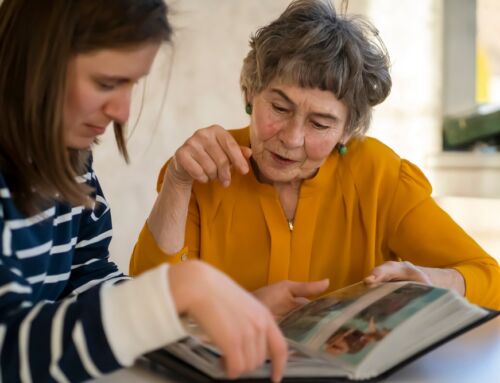With so many older adults on a fixed income, increases in housing expenses can hit hard. A recent report predicts that rent prices will rise faster than the rate of inflation in many areas of the U.S.–about 3 to 5 percent on average nationally.
On top of increases in rent, the last two winters brought many record-low temperatures as well as record-high natural gas and heating oil prices. Many seniors faced serious sticker shock when they opened their power bills and worried about how they would cover the higher costs.
>>Related: Preparing for the Cold: Home Winterizing Tips for Seniors
But thankfully, there is some good news for seniors who are worried about their expenses going up: the U.S. Energy Information Administration’s Short-Term Energy Outlook foresees lower heating costs for the winter of 2015-2016 (October through March), thanks in part to milder temperatures and lower overall fuel prices.
Quick tips to lower heating bills this winter
With lower heating costs but higher rent, older Americans may want to consider some ways to save a few extra dollars on their power bills to bridge the gap in these expenses. Here are a few simple tips that can lower your home’s energy consumption this winter.
Lighting
Just by replacing your home’s five most frequently used light bulbs with newer energy-efficient models, you will save approximately $75 each year. There are three main types of energy-wise bulbs on the market for residential use:
- Halogen incandescent bulbs are the more-efficient cousins of the traditional incandescent light bulb, using less energy and boasting up to three times the lifespan. Halogens come in numerous shapes, sizes, and colors and can be utilized with dimmer switches.
- Compact fluorescent lamps (CFLs) last roughly ten times as long and use 75 percent less energy than a traditional incandescent bulb. While they are more pricey up front than the “old-fashion” varieties, the typical CFL will pay for itself in energy savings in less than nine months and will continue to save you cash for its life.
- Light emitting diodes (LEDs) use only about 20 to 25 percent of the energy of a traditional incandescent bulb, and they last up to 25 times longer, making them the most energy-efficient residential lighting option available. They come in an array of colors, provide similar light quality to traditional incandescent, and some are even dimmable.
A few additional ways to save on lighting:
- Keep blinds, curtains, or shades open to use sunlight instead of turning on the lights.
- Outdoor lights are typically left on for long periods of time, so be sure to replace incandescents with CFLs or LEDs to save on energy use.
- Consider trading your traditional incandescent holiday lights for LEDs. Burning 125 standard-size decorative lights for 480 hours costs around $25. Instead, switch to twice as many smaller LED lights, and you will spend only about 50 cents.
>>Related: Learn how better lighting can help address age-related vision changes.
Heating and cooling
A home’s heating and cooling unit uses more energy (and thus costs more money) than any other system, typically accounting for nearly half of your utility bill expenses. But with proper equipment maintenance, as well as a few simple changes, you can lower your costs by around 30 percent.
- During waking hours, put on warm socks and/or slippers. Because heat rises, a room’s temperature is usually coldest near the floor.
- Keep blinds, curtains, or shades open during the day, especially for south-facing windows, allowing sunlight to warm the room naturally.
- Invest in a programmable thermostat and set it as low as is comfortable during the day, and then lower the temperature even further at night (or when you are away from home). Put another blanket on the bed for an extra layer of warmth!
- Clean or replace filters on your furnace monthly (or as recommended) to ensure it is running as efficiently as possible. Keep warm-air registers, baseboard heaters, and radiators clean too, and be sure they are not blocked by furniture, carpeting, or curtains.
- If your home has radiators, eliminate trapped air in the pipes once or twice a winter. Contact a professional if you are unsure of how to do this yourself.
- Ensure fireplaces have tightly fitting glass doors so warm air does not escape up the chimney when not in use. And while it may sound counterintuitive, when the fireplace is in use, leave a nearby window cracked to keep the warmer inside air from escaping up the chimney.
Windows
Poor insulation can allow 25 percent of your home’s heat to literally go out the window. But you can substantially reduce that wasted energy in several ways.
- If your home has single-pane windows, it can be worth it in the long-haul to replace them with double-pane windows with high-performance glass. In colder regions, choose gas-filled panes with low-e coatings to reduce heat loss.
- Use heavy-duty, clear, plastic sheeting and tape it to the inside of your window frames to protect against cold drafts. (The same can be done on unused patio doors.)
- Close curtains and shades at night to reduce drafts, and then be sure to open them during the day in order to let in the sun’s warmth.
Worth the time
If you are a senior and every dollar counts in your budget, the energy costs that come along with the winter months can painfully high. But by taking these few extra steps, you can make a real dent in your monthly power bills. If you need assistance with implementing these energy-saving tips, contact a local handyman.






